Fudd Friday: Wood-And-Steel Semi-Autos For Deer Season

We get it. The AR-15 rules supreme in the U.S. market. But even though the AR series has been around since the 1950s, when Eugene Stoner brought the AR-10 and other designs to market, a lot of us are still happy to shoot a rifle with a wood stock and traditional ergonomics—and bang-bang-bang rapid-fire capability. You don’t see a lot of hype from the industry for Fudd-tastic semi-autos, but they’re still quite desirable to some hunters. Here’s a quick summary of what’s available on the new and used market.
Deer guns @ TFB:
Remington Model 8/Model 81
We took a close look at these rifles a few weeks back. Based on a long-recoil action designed by John Browning, the Model 8 and then the Model 81 were by far the most popular semi-auto hunting rifles of the first half of the 20th century.
They’re heavy and don’t mount optics easily, but they are a unique rifle that will still knock down game 120 years after their debut. However, many are chambered in oddball cartridges like .25 Remington or .30 Remington; unless you reload, you want one in .35 Remington or .300 Savage. In those calibers, as long as the rifle functions correctly and you’re OK with iron sights, these are surprisingly fun and effective at close-to-medium range. One of the most enjoyable woods guns you can buy.
Remington Model 740/742/7400/750
The gas-operated semi-autos that replaced Remington’s recoil-operated guns in 1955 looked like a big upgrade at first. They were easier to shoot; the gas system with rotating bolt soaked up a lot of recoil. They were easier to scope, with a flat-top receiver and over the series’ production, most came drilled and tapped for optic mounts from the factory. They came chambered in hard-hitting centerfire cartridges like .270, .30-06, and.308; or even .243 if you wanted to give up some knockdown power in exchange for less kick. They had a removable box magazine, something that was only available on the earlier Model 8 and Model 81 as an aftermarket option.
Unfortunately, the first Model 740 earned a reputation as a so-called “Jam-O-Matic.” The Model 742 caused less problems, the Model 7400 improved the series further, but even by the Model 750, many hunters still distrusted these semi-autos, fairly or unfairly.
There were a couple of reasons for this. A big part of the problem was internal wear in the receiver. The rifle’s bolt ran on a set of rails machined into the receiver wall, and the locking lugs would wear these rails down. A good gunsmith could temporarily smooth out the chattering on the metal surface, but eventually, the rifle would be damaged beyond repair. See Sam S.’s commentary on this problem here.
Later versions of this design had improved rails and had fewer problems, but even the earlier versions worked OK when they were new-ish. Again, according to Internet rumor, Remington had only designed these rifles to function for a few hundred rounds, and as long as you only shot a box or two of ammo per year, you’d get plenty of life from your Remington gas gun. For a lot of hunters, that was good enough.
Many of these Remingtons also had accuracy well behind bolt-actions or even the fast-shooting, more-reliable 760/7600 pump guns, and they were more difficult to clean than the older deer guns that many hunters were used to, especially if you lost the offset chamber-cleaning brush that rifles were shipped with.
But despite these much-ballyhooed problems, Remington sold millions of these guns, and many are still available on the used market in good shape. If you get one with a low round count and you maintain it carefully, you might still get years of use from it, as long as you don’t pound the ammo through it willy-nilly.
The reborn Remington seems to have no interest in bringing the gas-operated semi-auto back at this point, which is too bad. With some improvements, this could still be a desirable rifle to many hunters.
Winchester Model 100
The Winchester Model 100 came along in 1961 as a reply to Big Green’s 740-series rifles. At first, it looked like a serious competitor; a one-piece stock hinted at better accuracy, and it handled well with good balance. Little details like this can make or break a sale at the gun counter, and when you add in a reputation for better accuracy, it sure looked like this gas-operated semi-auto would be a long-term success.
But as filmmaker Adam Curtis says in all his collageumentaries, “This was a fantasy.” The Model 100 did see a decent 12-year production run, but it suffered from some serious disadvantages when compared to the Remingtons. The Winchester was only available in short-action cartridges like .243, .308 or .280. Even worse, in the 1960s through the 1970s, Winchester was gutting their lineup to bring in guns that were cheap to build and therefore cheaper to sell. The Model 100 survived the 1964 product lineup massacre, but when it was eventually canned, Winchester blamed production costs.
Many shooters still liked their Model 100, despite issues with craptastic magazines on some rifles. But in 1990, Winchester issued a recall for the entire lineup over issues with the firing pin—sometimes, the pin broke and would end up stuck in the breech face. When this happened, the gun could fire out of battery when the bolt closed. Now, when you buy a used Winchester 100, the ad almost always states whether or not the recall was performed. If you can find such a gun, and it runs well, you’ll have one of the finest semi-autos ever made for the deer woods. Especially if it’s a pre-’64 model, although the Model 100 was not cheapified to the same extent as the Model 94 and other Winchesters.
Browning BAR
Not to be confused with the World War I/II light machine gun, the Browning BAR hit the market in the 1960s. Although John Moses Browning had died many years earlier, this gun was a “true” Browning in that it was actually designed by his grandson Bruce. And in the 60ish years since its debut, it’s still the best semi-auto deer rifle that most shooters will lay their hands on.
The BAR is gas-operated, and for decades it has come in a wide range of chamberings from the low-recoil .243 to the moose-smashing 7mm Magnum or .300 Winchester Magnum. Production started in Belgium at the FN plant, where the craftsmen knew what they were doing. Even though many BARs have now been built in other factories, they all have a reputation for reliability and even accuracy that’s not far behind a bolt gun. The steel-receiver BAR is heavy, but later versions are available with an aluminum receiver to reduce your load.
In short: If you can afford it, this is the best semi-auto wood-and-steel deer gun that’s widely available. Older rifles might suffer from a shortage of spare parts, but if you get one of the more modern iterations, the BAR should last most hunters their lifetime. And you can still buy one brand-new, unlike all the other rifles mentioned so far.
Benelli R1
The Benelli R1 has been in North America for some time now, but it is far more popular in Europe, where hunters like to use them on driven game (wild boar, in particular). The Benelli R1 has an ARGO-pattern gas action similar to their shotguns, and is similarly reliable—it’s easier to clean than the BAR, too.
The only drawbacks in many hunters’ eyes will be the modern Euro styling and the price tag. These aren’t cheaply-made rifles, and that quality means a higher price tag when you buy new or used.

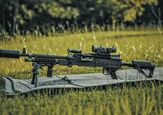
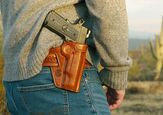
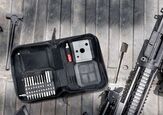










![[SHOT 2025] SIG’s ROMEO8T-AMR and JULIET3T Dynamic Reticle System](https://cdn-fastly.thefirearmblog.com/media/2025/01/27/12071/shot-2025-sig-sig-romeo8t-amr-and-juliet3t-dynamic-reticle-system.jpg?size=350x220)




![[SHOT 2025] Geissele BOLT ACTION And More](https://cdn-fastly.thefirearmblog.com/media/2025/01/22/23331/shot-2025-geissele-bolt-action-and-more.jpg?size=350x220)

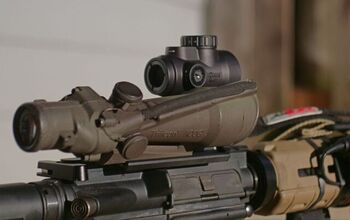
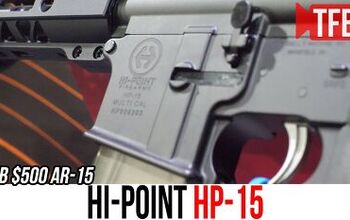

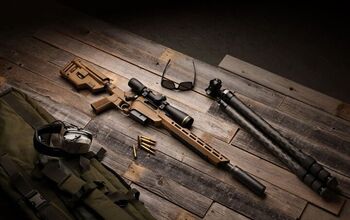




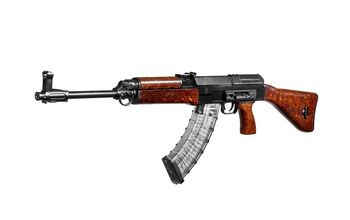
Comments
Join the conversation